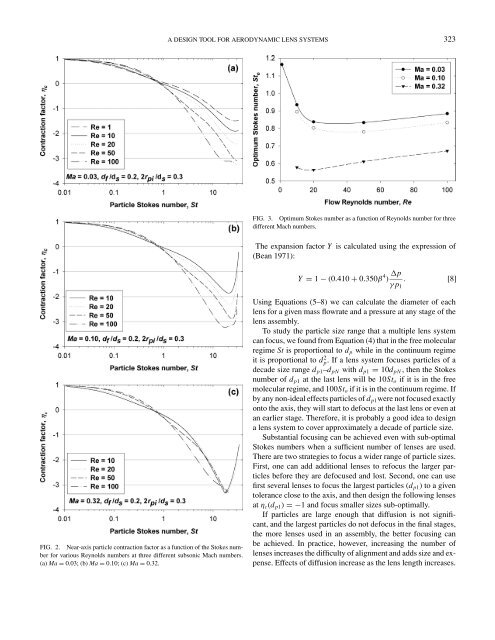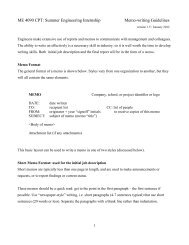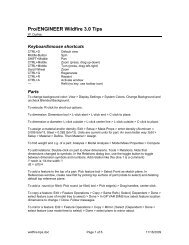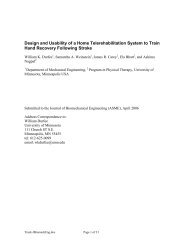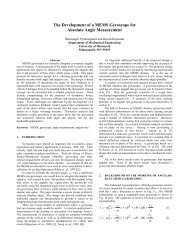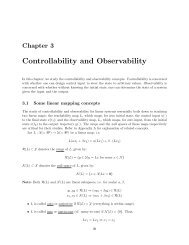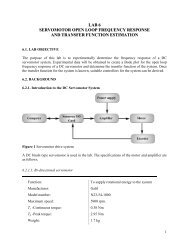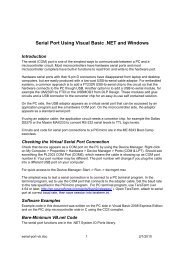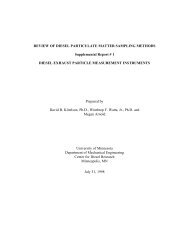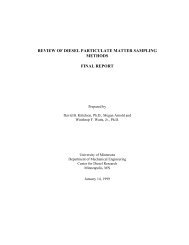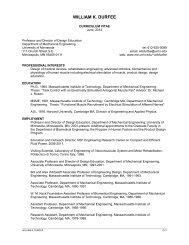A Design Tool for Aerodynamic Lens Systems - Department of ...
A Design Tool for Aerodynamic Lens Systems - Department of ...
A Design Tool for Aerodynamic Lens Systems - Department of ...
You also want an ePaper? Increase the reach of your titles
YUMPU automatically turns print PDFs into web optimized ePapers that Google loves.
FIG. 2. Near-axis particle contraction factor as a function <strong>of</strong> the Stokes number<br />
<strong>for</strong> various Reynolds numbers at three different subsonic Mach numbers.<br />
(a) Ma = 0.03; (b) Ma = 0.10; (c) Ma = 0.32.<br />
A DESIGN TOOL FOR AERODYNAMIC LENS SYSTEMS 323<br />
FIG. 3. Optimum Stokes number as a function <strong>of</strong> Reynolds number <strong>for</strong> three<br />
different Mach numbers.<br />
The expansion factor Y is calculated using the expression <strong>of</strong><br />
(Bean 1971):<br />
Y = 1 − (0.410 + 0.350β 4 ) �p<br />
. [8]<br />
γ p1<br />
Using Equations (5–8) we can calculate the diameter <strong>of</strong> each<br />
lens <strong>for</strong> a given mass flowrate and a pressure at any stage <strong>of</strong> the<br />
lens assembly.<br />
To study the particle size range that a multiple lens system<br />
can focus, we found from Equation (4) that in the free molecular<br />
regime St is proportional to dp while in the continuum regime<br />
it is proportional to d2 p .Ifalens system focuses particles <strong>of</strong> a<br />
decade size range dp1–dpN with dp1 = 10dpN, then the Stokes<br />
number <strong>of</strong> dp1 at the last lens will be 10Sto if it is in the free<br />
molecular regime, and 100Sto if it is in the continuum regime. If<br />
by any non-ideal effects particles <strong>of</strong> dp1were not focused exactly<br />
onto the axis, they will start to defocus at the last lens or even at<br />
an earlier stage. There<strong>for</strong>e, it is probably a good idea to design<br />
a lens system to cover approximately a decade <strong>of</strong> particle size.<br />
Substantial focusing can be achieved even with sub-optimal<br />
Stokes numbers when a sufficient number <strong>of</strong> lenses are used.<br />
There are two strategies to focus a wider range <strong>of</strong> particle sizes.<br />
First, one can add additional lenses to refocus the larger particles<br />
be<strong>for</strong>e they are defocused and lost. Second, one can use<br />
first several lenses to focus the largest particles (dp1) toagiven<br />
tolerance close to the axis, and then design the following lenses<br />
at ηc(dp1) =−1 and focus smaller sizes sub-optimally.<br />
If particles are large enough that diffusion is not significant,<br />
and the largest particles do not defocus in the final stages,<br />
the more lenses used in an assembly, the better focusing can<br />
be achieved. In practice, however, increasing the number <strong>of</strong><br />
lenses increases the difficulty <strong>of</strong> alignment and adds size and expense.<br />
Effects <strong>of</strong> diffusion increase as the lens length increases.


